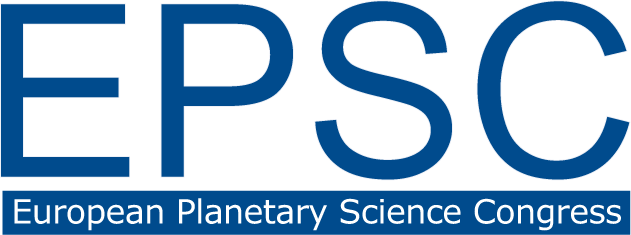Session programme
OPS – Outer Planet Systems
Programme group coordinators: Athena Coustenis, Federico Tosi, Kelly Miller, Terry Hurford
OPS1
Convener:
David H. Atkinson
|
Co-conveners:
Sushil K. Atreya,
Thibault Cavalié,
Leigh Fletcher,
Mark Hofstadter,
Olivier Mousis,
Carol Paty,
Elizabeth Turtle
OPS2
Convener:
Athena Coustenis
|
Co-conveners:
Scott Edgington,
F. Michael Flasar,
Adam Masters,
Christina Plainaki,
Linda Spilker
OPS3
Co-organized as EXO16
Convener:
Carly Howett
|
Co-conveners:
Shahab Fatemi,
Chris German,
Candy Hansen,
Jason Hofgartner,
Mika Holmberg,
Terry Hurford,
Hans Huybrighs,
Alison Murray,
Alyssa Rhoden,
Darci Snowden,
Anezina Solomonidou,
Joseph Spitale,
Federico Tosi
OPS4
Convener:
Jonathan I. Lunine
|
Co-conveners:
Sushil K. Atreya,
Heidi Becker,
Scott Bolton,
Emma Bunce,
Daniele Durante,
Alessandro Mura,
Glenn Orton,
Paul Steffes
EXO11
Co-organized as TP22/OPS5
Convener:
Shiblee Ratan Barua
|
Co-conveners:
Rosanna del Gaudio,
Felipe Gómez,
James O’Donoghue,
Conor Nixon
EXO5
Co-organized as TP19/OPS6
EXO7
Co-organized as TP18/OPS7
TP17
Co-organized as OPS8
Convener:
Anni Määttänen
|
Co-conveners:
Michael Chaffin,
Francisco González-Galindo,
Majd Mayyasi,
Claire Newman,
Takehiko Satoh,
Dmitrij Titov
EXO9
Co-organized as OPS9
Convener:
Michiel Lambrechts
|
Co-conveners:
Yuri Fujii,
Anders Johansen,
Daohai Li,
Farzana Meru,
Thomas Ronnet
EXO18
Co-organized as TP7/OPS10/SB12
TP13
Co-organized as OPS12/SB13
Convener:
Alexander Stark
|
Co-conveners:
Dominic Dirkx,
Antonio Genova,
Xuanyu Hu,
Valery Lainey,
Gregor Steinbrügge,
Marie Yseboodt
TP14
Co-organized as OPS13/EXO15
Convener:
Maxim Ballmer
|
Co-conveners:
James Badro,
Renaud Deguen,
Alison Hunt,
Ana-Catalina Plesa,
Sebastiano Padovan,
Gregor Golabek,
Lena Noack
EXO4
Co-organized as TP10/OPS14
Convener:
Frank Sohl
|
Co-conveners:
Karen Appel,
Dan Bower,
Caroline Dorn,
Martin French,
Helene Massol,
Nadine Nettelmann,
Lena Noack,
Apurva V. Oza,
Gerd Steinle-Neumann


